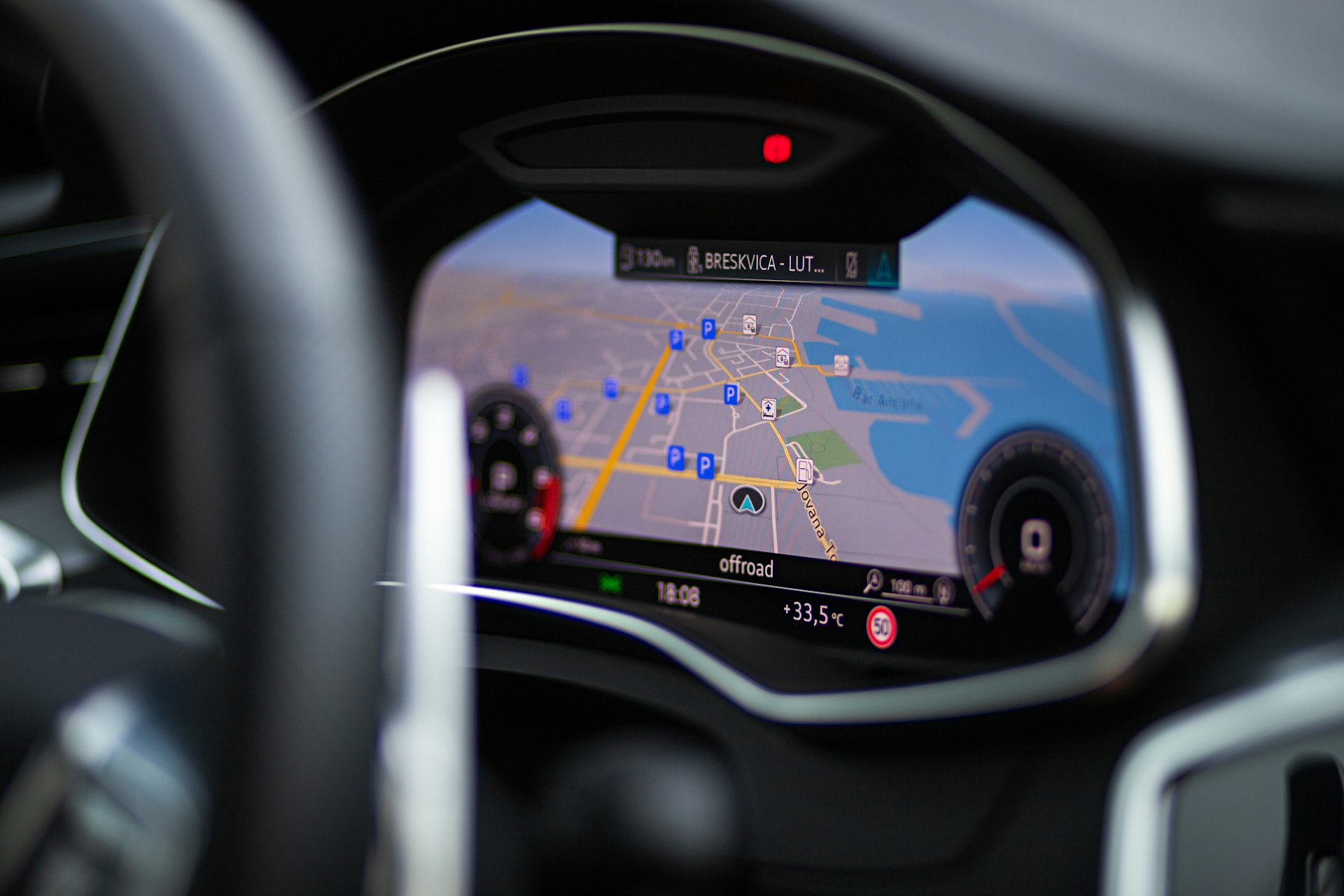What’s Next: The Future of Fully Autonomous Personal Vehicles in a Rapidly Evolving World

Photo by Darren Halstead on Unsplash
The Road Ahead: Understanding Fully Autonomous Personal Vehicles
Fully autonomous personal vehicles have captured the public imagination for over a decade, with promises of safer roads, increased convenience, and radically transformed urban landscapes. However, the journey toward widespread adoption has been characterized by both exciting breakthroughs and measured, incremental progress. This article explores the current state of development, the most influential trends, real-world examples, and practical guidance for individuals and businesses seeking to engage with the autonomous vehicle (AV) revolution.
Levels of Vehicle Autonomy: Where Are We Now?
The Society of Automotive Engineers (SAE) defines six levels of vehicle automation, from Level 0 (no automation) to Level 5 (full automation). Today, most new personal vehicles on the market feature Level 2 (L2) or Level 2+ (L2+) automation, which provide advanced driver assistance systems (ADAS) such as adaptive cruise control, lane keeping, and automated emergency braking. These systems support the driver but still require hands on the wheel and full attention on the road [2] .
While several companies, including Tesla, Waymo, and Honda, have made significant progress toward higher levels of autonomy, widespread availability of Level 4 (L4) and Level 5 (L5) vehicles-where the car can handle all driving tasks without human intervention-remains limited by technical, regulatory, and economic challenges [2] [4] .
Current Trends Shaping the Future of Autonomous Personal Vehicles
Several key trends are driving the evolution of fully autonomous vehicles:
1. Incremental Automation and Advanced Assistance Features: Personal vehicles are increasingly offering sophisticated ADAS features, such as highly automated driving (HAD), speed limit recognition, and in-cabin monitoring for improved safety. These systems are expected to become more prevalent in new cars over the next five years, with most vehicles still requiring active driver supervision [5] . According to industry projections, Level 2 and Level 2+ vehicles will dominate global sales through the end of the decade [4] .
2. Integration of Artificial Intelligence and Sensor Fusion: Autonomous vehicles leverage an array of sensors-including lidar, radar, cameras, and ultrasonic systems-combined with powerful AI algorithms to perceive and navigate complex environments. These technologies are rapidly improving, enabling safer and more reliable driving assistance, even in challenging conditions [1] .

Photo by Igor Shalyminov on Unsplash
3. Electrification and Sustainability: The push toward electric vehicles (EVs) aligns closely with the development of autonomous capabilities. Many upcoming AVs are built on electric platforms, reflecting commitments to reduce emissions and advance climate goals. Companies like Waymo and Tesla are investing heavily in autonomous EVs, which combine the benefits of zero-emission driving with advanced automation [3] .
4. Market Growth and Economic Impact: The global autonomous vehicle market is projected to reach $62 billion by 2025, with continued growth anticipated in the following decades [1] . The U.S. and China are leading the way, with revenues expected to hit $174 billion by 2045 [3] . However, true full autonomy in personal vehicles is predicted to arrive gradually, with regulatory and safety hurdles remaining significant.
Real-World Examples and Case Studies
Waymo and the Shift to Autonomous Ride-Hailing: Waymo has made notable progress by launching all-electric autonomous Jaguar I-PACE vehicles in Miami, with plans to offer a public ride-hailing service by 2026. This demonstrates how autonomous technology is being deployed in controlled urban environments before becoming widely available for personal ownership [3] .
Tesla’s Full Self-Driving (FSD) Updates: Tesla continues to develop its FSD package, aiming to release new features in the U.S., EU, and China in 2025. While these systems offer enhanced automation, drivers are still required to supervise the vehicle at all times [3] .
Collaborative Ventures: Partnerships such as that between Sony and Honda (for the Afeela EV) and Waymo with Geely highlight the collaborative approach to developing and scaling autonomous vehicles, combining expertise in AI, manufacturing, and electric platforms [3] .
Regulatory Environment and Safety Considerations
Regulation remains a primary barrier to the rollout of fully autonomous vehicles. Governments in the U.S., Europe, and Asia are developing frameworks to test and certify AVs, but progress varies by region. For example, the UK government has shifted its approval timeline for fully autonomous personal vehicles from 2026 to the latter half of 2027, citing the need for additional safety validation [2] .
As a consumer or business interested in AVs, it is important to:
- Monitor announcements from official transportation authorities in your region regarding pilot programs and regulatory changes.
- Seek out vehicles with advanced safety certifications and participate in manufacturer-led training or demonstration events when available.
You can stay informed by regularly visiting the official websites of your country’s transportation agencies and searching for “autonomous vehicle regulations” or “self-driving car pilot programs.” In the United States, the National Highway Traffic Safety Administration (NHTSA) is a key agency involved in AV oversight.
Practical Steps for Engaging with Autonomous Vehicles
While fully autonomous personal vehicles are not yet widely available for private purchase, there are several actionable steps you can take to prepare for and participate in this technological shift:
- Explore Advanced Driver-Assist Features: When purchasing a new vehicle, prioritize models equipped with the latest ADAS capabilities. These features not only enhance safety but also provide a bridge to future autonomous functions. Consult automaker websites and request detailed demonstrations from dealerships.
- Participate in Pilot Programs: Some urban areas and automakers offer pilot programs for autonomous ride-hailing or shuttle services. You can apply by visiting official company pages (such as Waymo or Tesla) or searching local government transportation portals for “autonomous shuttle programs.” Always verify the company’s legitimacy and safety record.
- Stay Informed on Policy and Safety Updates: Sign up for updates from your local department of transportation and trusted automotive news sources. This will help you track changes in legal requirements, insurance policies, and safety standards for AVs.
- Consider the Total Cost of Ownership: While pricing for fully autonomous personal vehicles is not yet established, industry experts suggest that costs could initially be higher due to advanced sensors and computing systems. However, costs are expected to decrease as production scales. You can compare the projected costs of ADAS-equipped vehicles today as a reference point [4] .
- Plan for Infrastructure Changes: Autonomous vehicles may require updates to home charging stations (for EVs), dedicated parking solutions, or new insurance products. Consult with local service providers and your insurance agent to understand available options.
Potential Challenges and Solutions
Several challenges must be addressed before fully autonomous personal vehicles become mainstream:
Technical Complexity and Safety: Achieving safe, reliable autonomy in all driving conditions is a significant hurdle. Solutions include increased investment in AI, expanded real-world testing, and collaboration between automakers, tech firms, and regulators.
Regulatory and Liability Issues: Differing laws and standards across regions complicate deployment. Advocacy for harmonized regulations and clear liability frameworks can help accelerate adoption.
Consumer Trust and Education: Building public confidence is critical. Participation in demonstrations, transparent safety reporting, and third-party reviews can support greater acceptance.
Alternative Pathways to Autonomy
For individuals who want to experience autonomous mobility sooner, consider the following alternatives:
- Using autonomous ride-hailing services where available (e.g., Waymo in select U.S. cities).
- Participating in community pilot programs for autonomous shuttles.
- Leveraging high-end ADAS features in current vehicles while monitoring advancements.
Always confirm the legitimacy and safety record of these services through official company channels and government transportation websites.
Key Takeaways and Next Steps
The future of fully autonomous personal vehicles is unfolding through a combination of technological advances, regulatory adaptation, and changing consumer preferences. While full autonomy for personal cars is likely to arrive incrementally over the next decade, the foundations-advanced driver assistance, electrification, and AI-are already transforming the automotive experience today.
To stay ahead, regularly consult reputable industry news, monitor regulatory updates from your national transportation authority, and consider joining pilot programs or purchasing vehicles with advanced automation features. For the latest verified developments and safety guidance, visit official automaker websites or search terms like “autonomous vehicle pilot program” on your regional transportation agency’s portal.
References
- [1] Fifth Level Consulting (2025). Top 10 Autonomous Vehicle Trends (2025).
- [2] World Economic Forum (2025). Autonomous Vehicles: Timeline and Roadmap Ahead.
- [3] GDS Online (2025). Autonomous Vehicle Trends: What’s Next for 2025?
- [4] World Economic Forum (2025). Autonomous Vehicles: Timeline and Roadmap Ahead [White Paper].
- [5] HERE Technologies (2025). 2025’s Cutting-edge Autonomous Driving Trends.
MORE FROM promospotlight.com













